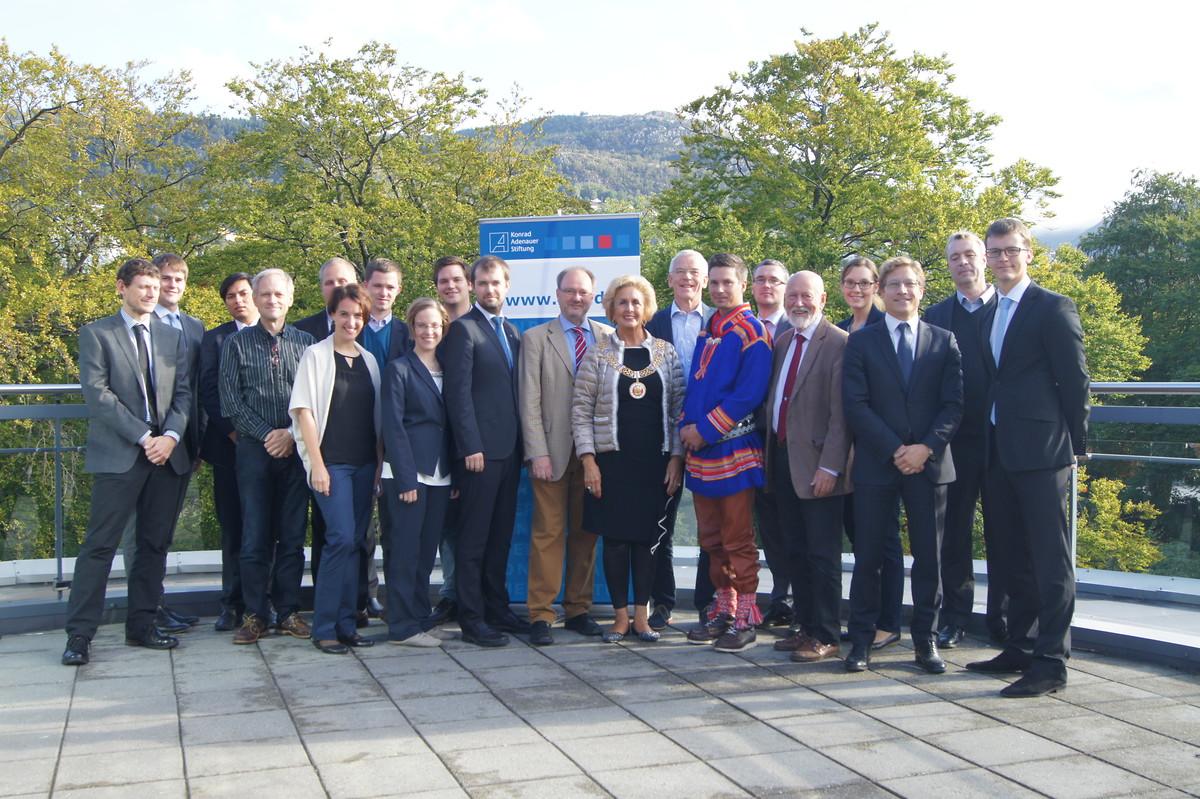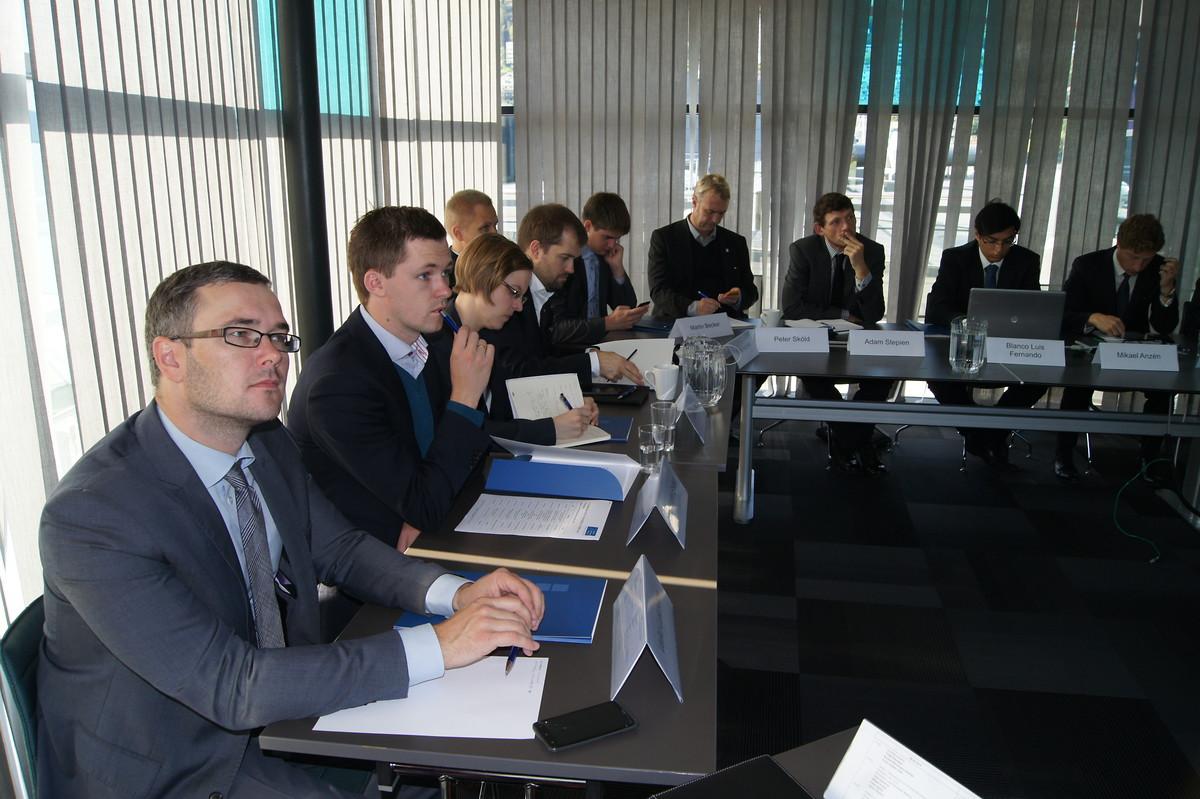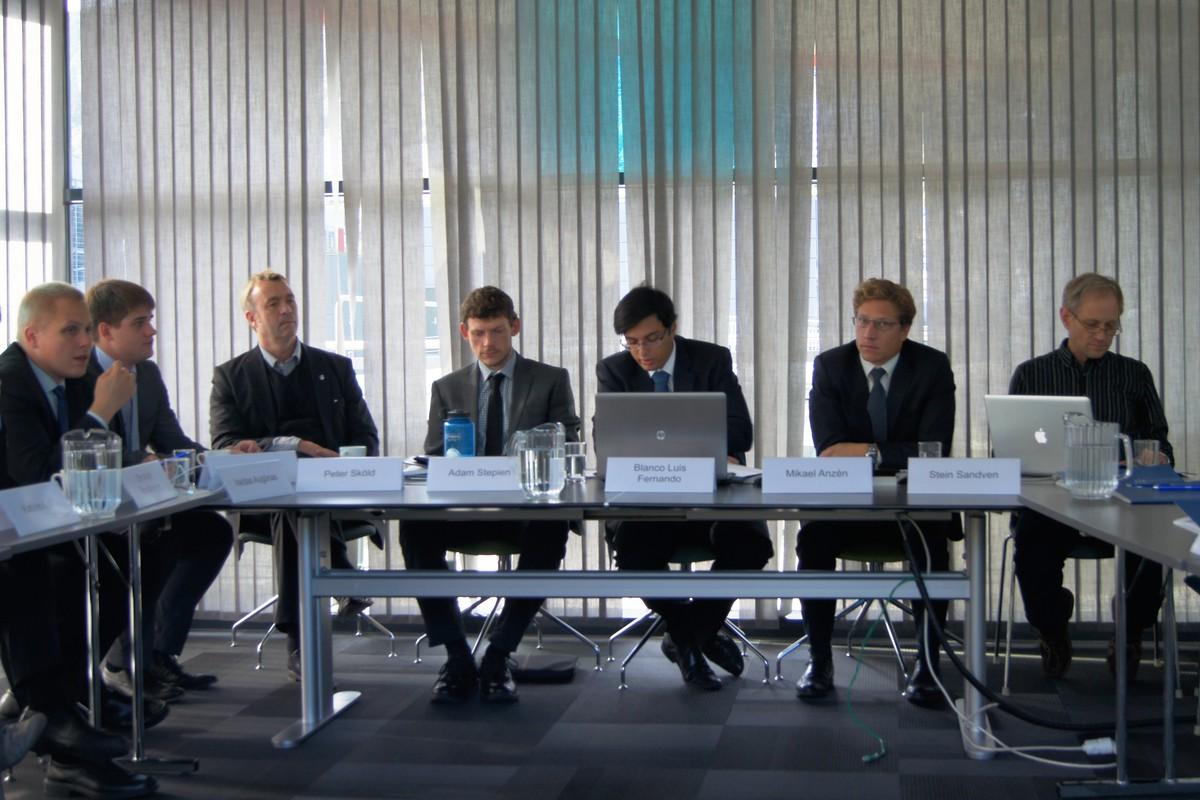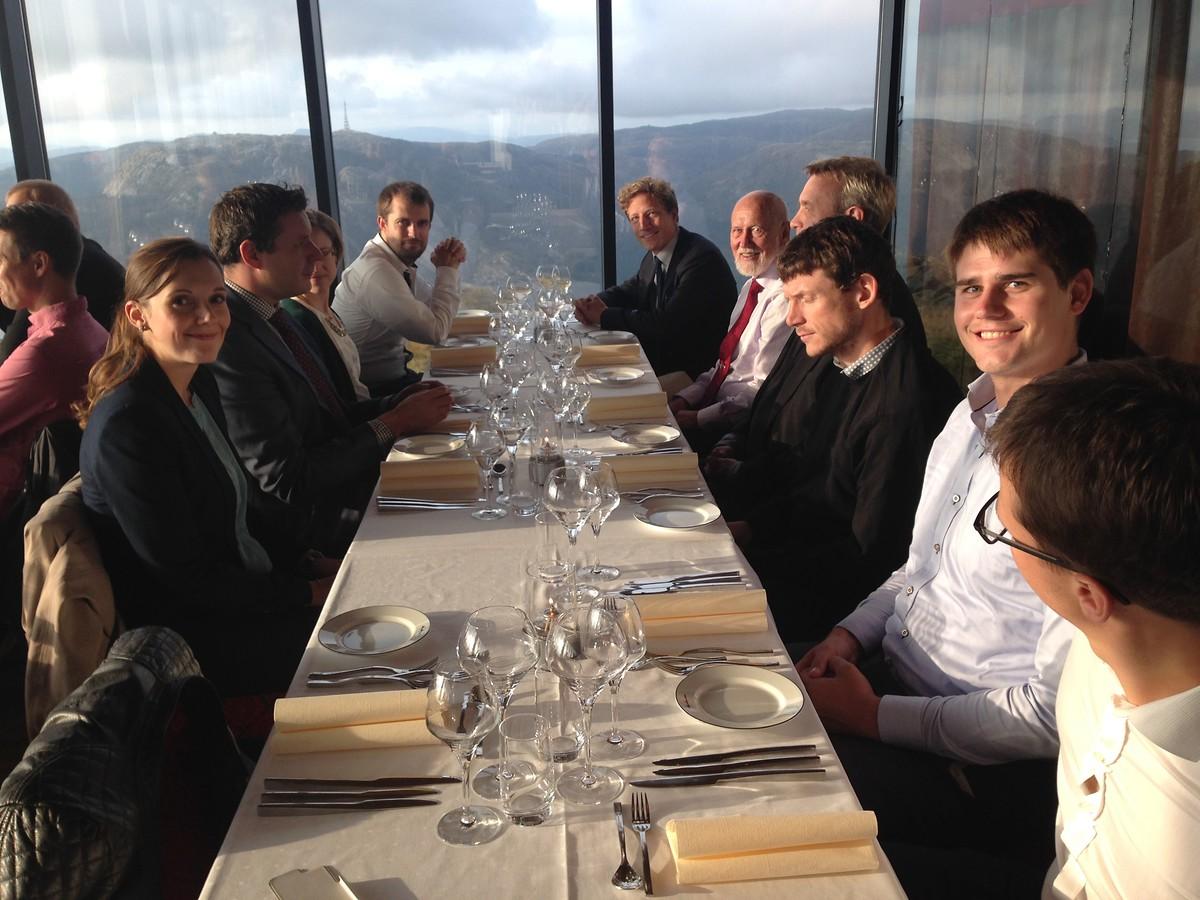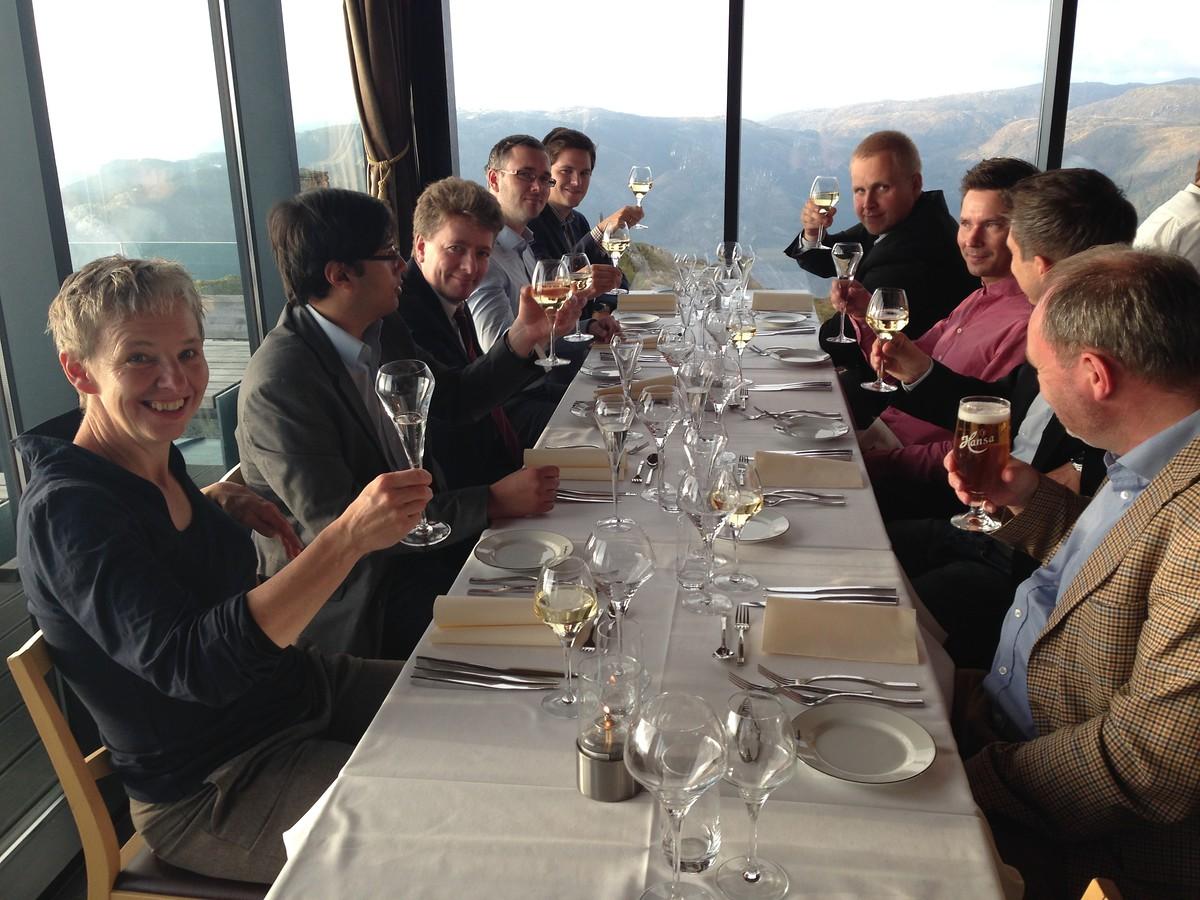As a warming Arctic region raises both expectations of new economic opportunities and concerns about adverse environmental and social impacts of the fast-paced changes, calls for a sustainable approach have become ubiquitous in the circumpolar region. The Konrad Adenauer Foundation gathered researchers, policymakers and local stakeholders for the seminar “A Sustainable Arctic: Preconditions, Pitfalls and Potentials” to discuss the challenges and chances that discussions around Arctic sustainability entail. The seminar was organized into three panels focusing on research perspectives on environmental and socio-economic changes, on local stakeholders’ issues and the role of international cooperation with regard to Arctic sustainability. As there was a lot of lively discussion touching upon many different aspects within and beyond these thematic clusters, this report will only be able to address a few central aspects of discussion.
The Idea of “Arctic Sustainability”
The buzzword “Arctic sustainability” is used in countless contexts, yet both of these terms come with a conceptual baggage that needs to be clarified. The “Arctic” is often imagined as a pristine, isolated wilderness of icebergs, polar bears and the absence of human beings. At the beginning of the seminar, it was raised that some Arctic policies, unaware of local conditions, rather seem to address polar bears instead of people. Yet, the Arctic region is home to about four million inhabitants and includes various urban centers. It stretches over three continents and is far from being a monolithic entity – each specific country, region and even community may face different challenges that require different responses. Experts repeatedly point out that there is no such thing as one, homogenous Arctic. Even the European Arctic, which the seminar at hand focused upon, displays many regional differences, and it is important to counter widespread simplistic and inaccurate images through differentiating discussions.
Similarly, the notion of sustainability has been used in so many various contexts – to serve and justify multiple purposes – that some researchers call it a ‘chameleon term’, being subjected to whatever meaning the user of the term finds suitable. To prevent the term from becoming void of meaning, ‘sustainability’ hence needs to be contextualized and narrowed down as much as possible in each context it is discussed. Despite its abstract character, ‘sustainability’ can be a very useful tool in a dialogue – the discussion of what each actor regards sustainable reveals a lot about their values and interests. Alternatively, analysts and stakeholders talk about ‘balance’, ‘responsible’ or ‘altruistic approaches’ to the Arctic.
When asking whether there are sustainable approaches to the Arctic, it is important to be aware of the motives and agendas behind activities in the High North. The consequences are rarely considered when actors put forward an agenda for sustainable development.
The Brundtland report ‘Our Common Future’ of 1987 coined the term ‘sustainable development’ and introduced its three major pillars: economic growth, environmental protection, and social equality. But if one pillar is promoted, it inevitably affects the remaining two – finding a balance is hence a major challenge. It is necessary to be very clear about the meaning of sustainable development by restraining oneself to a narrow, in-sito perspective. It has been argued that an ‘altruistic’, sustainable policy approach lacks foundation and credibility if imposed upon local Arctic communities by decision makers in distant metropolitan centers and capitals; as such policies often fail to be tailored and sensitized for the local challenges. Critics argue that Arctic policies are often at best developed for the people of the North, but rarely by the local stakeholders themselves.
The Human Dimension of European Arctic Sustainability
The Arctic Human Development Report (AHDR) is one way to approach issues of Arctic sustainable development locally, describing the situation of the people in the North by using social indicators to measure human development in the long term. The next AHDR report will be published this year.
It includes, for instance, the situation of health among Arctic residents, as health constitutes a pivotal part of socio-economic development and sustainability. As opposed to other Arctic regions, the health gap between the indigenous Sami population and the non-indigenous people in the European Arctic has been closed, which is considered a major success story. About 200 years ago, the life expectancy among the Sami population was considerably lower, the mortality rate much higher than among the non-indigenous population. Today, Sami people are as healthy as everybody else in the region. In Canada, the life expectancy of aboriginal people is 13 years below the average population. Despite this success in the European context, some ethnicity-related health issues remain: higher suicidal rates among male Sami reindeer herders are still a concern in this regard.
A lot of empowerment of indigenous communities can be observed in the European Arctic, and many indigenous representatives have become very active stakeholders speaking up on the behalf of their communities and what they need to sustain their livelihoods. Nevertheless, these communities are severely challenged by a rapid assimilation process that threatens the indigenous languages, their culture and overall identity. Sustainable development in this context needs to include efforts to protect and preserve their cultural heritage and livelihoods.
Another challenge to the human dimension of sustainability is food and water security. This aspect does not exclusively focus on access to food and water as such, but also on the safety of it – many areas in the Arctic are contaminated and show high concentrations of mercury and persistent organic pollutants, among others generated through economic activities in the region.
Arctic Land-based Industries: Conflicting Interests and Balancing Acts
Economic activities in the Eurasian Arctic encompasses as diverse sectors as fishing, shipping, oil and gas extraction, mining, forestry, reindeer husbandry and tourism. In many cases there are multiple economic actors operating in overlapping areas, generating conflicts of interests.
A sustainable use of the resources in these overlapping economic areas requires a constant dialogue on an equal footing among all actors. However, it is the combination of overlapping areas of activity and the lack of equal footing - the presence of unequal power relations – that either hampers dialogue or increases frustration about the unsatisfying outcomes of debates and consultations. One example at hand are the intersecting interests of the mining industry and reindeer herders. While the former meet rather favorable conditions for their business in countries like Sweden, the latter criticize their lack of legal instruments to oppose expanding mining activities on traditional reindeer grazing land. The understanding of sustainable land-use diverges in this case to an extent that appears rather difficult to reconcile.
However, mining is often perceived as a sustainable economic activity that creates jobs and generates wealth in the European Arctic. Long-term resource extraction activities, be it in marine areas or land-based that are perceived to create value for the local communities mostly enjoy the support of large parts of the local population – the Kiruna mine in northern Sweden, perceived as a job-securing institution and integral part of the city, is a point in case. It epitomized a very sensitive balancing act between socio-economic sustainability and environmental protection, a balance that triggers a continuously controversial debate on priorities.
A sustainable approach in the Arctic mostly entails that the revenue created in the region stays in the region, as the abovementioned example indicated. Another area that could be discussed in this regard is the Barents region. Some analysts argue that the region has performed below its potential economically, and the proposal to create a Free Trade Zone creates controversial discussions in this regard. Another idea for an improved economic sustainability is to introduce regional taxation on natural resources, to ensure that local communities benefit from the generated profits.
Oil, Gas, Fishing and Shipping – Is the Arctic Ocean another Klondike?
Retreating sea-ice and the opening of the Arctic Ocean often serve as main argument for optimistic outlooks on the potential of Arctic economic development. Sensationalist accounts continuously predict an Arctic gold rush with regard to oil and gas, shipping and fishing activities.
However, one precondition for understanding changes in the Arctic is to be aware that future sea-ice changes are still hard to predict. The Arctic climate system is impacted by many underlying factors including the atmosphere, ocean currents, and freshwater inflow from rivers, to name just a few. The entanglement of all these factors makes it difficult to predict the extent of sea-ice reduction in the future. Although the latest IPCC report indicates more robust signals for a continued ice melt, any prediction made in the report is based on models derived from data of the past three decades, and many uncertainties remain, which makes the planning of marine economic activities rather difficult.
In September 2012, scientists recorded a historical low of Arctic sea-ice. But natural variabilities in sea-ice extent occur from year to year and render a sudden rush for Arctic resources unrealistic, as drilling for oil and gas would be too hazardous and costly in many Arctic regions in the years to come.
It is equally unlikely that the Arctic will experience a swift boom in Arctic shipping. The Northern Sea Route along Russia can be completely ice-free for some months of the year and the Northwest Passage along the Canadian coast experiences reductions in sea-ice as well, making navigation in these waters possible. Shipping along these routes can reduce travel distances considerably, but time savings depend heavily on the ice extent. Harsh weather conditions, the need for specially equipped ice-class vessels or the assistance of icebreakers do not make large-scale Arctic shipping economically feasible. It holds true that an increase in regional shipping activities in the Arctic has been recorded. But uncertainties about the changing ice extent complicate the planning of shipping schedules along these routes, and especially the just-in-time container shipping business appears to be ill-suited to the volatile shipping conditions and related potential delays. Additionally, Arctic shipping can be a hazardous enterprise for personnel lacking experience in operating in icy waters, and there are still many question marks – not least among insurance companies and national coast guards – about responsibilities in cases of accidents, search and rescue emergencies. The global significance of Arctic shipping is therefore expected to stay rather low.
When it comes to fishing, the question arises whether the Arctic ice-melt causes fish stocks to migrate to Arctic waters in large numbers. However, the mere disappearance of sea-ice does not automatically generate a suitable habitat for many fish species. For cod and haddock, for instance, the Arctic Ocean is too deep to be habitable. The bottom topography, the depth of migration corridors and further factors like water temperature, salinity and food conditions (i.e., the abundance of plankton) and the size of respective fish stocks are criteria that determine whether a northward movement of fish stocks is realistic. While some species like redfish could potentially live in Arctic water conditions, many others cannot. From a research perspective, the predictions of a sudden, skyrocketing marine economic development appear to be exaggerated.
Analysts point out that the rhetoric of unstoppable, inevitable economic dynamics create the false impression of an uncontrollable process that would grossly underestimate the power of political decision making – either as a driving force or hindrance of economic activities in the Arctic. During the seminar, the question was raised if the depiction of Climate Change as the main driver of increased business activity in the Arctic grossly underrates the role of deliberate political choice.
International Cooperation and Governance Frameworks
From a policymaker perspective, the Arctic Council constitutes a crucial international governance institution to address sustainable development in the Arctic. The Council includes different expert and working groups, one of which is dedicated to sustainable development – the Sustainable Development Working Group (SDWG). The SDWG mainly focuses on human development in the Arctic including Arctic human health, socio-economic as well as cultural issues.
The Chairmanship of the Arctic Council rotates every two years, and under the Swedish Chairmanship 2011-2013, two incremental steps towards an increased social and economic sustainability in the Arctic have been addressed specifically: during this period, the Council introduced an initiative on Corporate Social Responsibility (CSR) and established a platform for Arctic business dialogue, the Arctic Economic Council. The latter is legally detached from the Arctic Council as such, but is informally linked to the Council.
The efforts to work on Arctic CSR originated from the expectation of increasing economic activity that would attract Arctic and non-Arctic companies alike. Multinational corporations may enter the field next to small and medium sized enterprises (SMEs), each adhering to different guidelines and best practices. In order to create a level playing field and agreed-upon business practices, the need for a more comprehensive governance framework arises. The Arctic CSR initiative seeks to bring actors from various backgrounds together to engage in dialogues in order to achieve common understandings, goals and commitments to a sustainable use of Arctic resources.
Adopting a sectoral approach, the initiative started off with a focus on Arctic shipping. A major conference held in London in March 2014 brought together a large number of stakeholders and specialists, including for instance ship owners and insurance companies. Ensuing conferences and activities are planned for areas such as mining and the oil and gas industry.
From the perspective of government representatives, it remains rather difficult to engage in a dialogue with business representatives. The Arctic Council hence introduced an informal process to facilitate consultati ons with business actors introducing the Arctic Economic Council, a body which has just been established and that does not have any formal attachment to the Arctic Council, despite a clear informal link and the purpose to enable government-business interaction.
From the European Union’s perspective, the Arctic undergoes changes that affect many areas beyond the Arctic itself, including the Union. Emphasizing that the EU has the largest shipping fleet in the world, contributing to the vast significance of the Union’s single market, EU representatives promote an inclusive approach towards Arctic governance, as the challenges of sustainability in the Arctic cannot be addressed by single actors. Especially meetings of the five Arctic littoral states (Canada, USA, Russia, Norway and Denmark via Greenland) are criticized by EU actors as exclusive in character. Although the EU may be perceived as an outside actor by some, many EU policies do play out in the Arctic as well, not least through its Arctic member states. It was argued that this fact makes the question whether the EU should become involved in Arctic governance somewhat redundant, as the EU is already involved through many of its policies. It is considered to be likely that the EU will be granted Observer Status at the next Arctic Council Ministerial Meeting in Iqaluit in April 2015.
While critics argue that processes of Arctic policymaking become ever more stretched and impacted by outside actors, proponents of inclusive approaches highlight the need to ‘bring the Arctic out’ in discussions, as many developments affecting the Arctic (like black carbon emissions, pollution and global warming) do not originate in the Arctic, but are brought into the region from outside. This, it is argued, makes the Arctic an area of concern far beyond its regional boundaries. That being said, there was widespread agreement among the participants that policies on Arctic issues need to be as close to the people living there as possible, and local knowledge and involvement is key for well-informed policymaking.
For the EU, the Arctic Council is considered the major governance institution to address Arctic issues, and the EU promotes a more transparent approach and strives for as much inclusiveness as possible in tackling challenges in the Arctic.
A recurring issue of concern throughout the open panel discussions was the future of Arctic cooperation with Russia. It has been pointed out that the Arctic region is characterized by peaceful regional cooperation following its own dynamics, which tends to be less affected by global events. Arctic cooperation between Russia and the European Arctic states is generally characterized by fruitful and concerted efforts to tackle common problems and to pursue common interests. About 50% of the Arctic coastal area belongs to the Russian Federation, making Russia an actor in the region that cannot be ignored. Regional cooperation in the Arctic Council and the Barents Euro Arctic Council are generally sought to be kept intact, but it has been pointed out that the cooperation in the Arctic Council has always been a trust-building exercise in great parts, an effort that now may be affected. With the EU sanctions in place, Russia might enhance its business cooperation in the Arctic with non-Arctic business partners from China, South Korea or Singapore, which may constitute attractive partners for the development of high technology equipment necessary for Arctic resource extraction.
The seminar revealed that it is of utmost importance to find a common understanding of what we talk about when we refer to sustainability in the Arctic. Rather than settling on one overarching notion of sustainability, its meaning needs to be contextualized with regard to the specific issue at hand. To enable a long-term commitment to sustainable and balanced development in the Arctic, it is therefore vital to keep all partners – inside as well as outside the Arctic – engaged in dialogue, information-sharing and a continuous exchange. This would help to create a more differentiated understanding of the Arctic and to demystify the way the region is imagined and conceptualized.
Text by Corinna Röver



